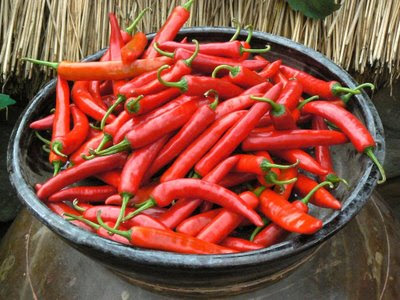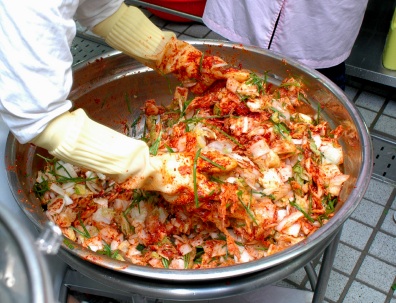By Dave DeWitt
In their otherwise excellent book Fiery Ferments (Storey Publishing, 2017), by Kirsten and Christopher Shockey, the authors, writing about the Korean gochu pepper (image above), state: “Historical documents show that Koreans have been growing, harvesting, and fermenting gochu for at least 1,500 years.” Alas, they are completely wrong. They cite the article “History of Korean Gochu, Gochujang, and Kimchi,” by Dae Young Kwon, Dai-Ja Jang, Hye Jeong Yang, and Kyung Rhan Chung, in the Journal of Ethnic Foods, 8 December 2014.
These Korean authors claim that “Korea’s gochu was transferred through a different route from that of Mexico’s red pepper and became a native Korean species. Based on scientific evidence, gochu started to grow on the Korean peninsula a few billions of years ago, and it is safe to say that it is original to Korea.” They offer no proof for this assertion. How unlikely is this statement? Well, according to Wikipedia, “Life remained mostly small and microscopic until about 580 million years ago, when complex multicellular life arose, developed over time, and culminated in the Cambrian Explosion about 541 million years ago.” So obviously the claim of peppers growing in Korea “a few billion” years ago is ludicrous.
The authors continue, “If The Chronicles of Three States (Kim Bu-sik, early Goryeo) is examined, records show that gochu was already being cultivated during the period of the three kingdoms of the Korean peninsula, Kokuro, Paekje, and Shilla (37 BC – 668 AD), indicating that the demand for gochu was high even during that time.”
What’s going on here is the same nationalistic fervor we saw in India when scientists claimed that the ‘Bhut Jolokia’ proved that chiles were native to India. (I have proof that Lord Harris, governor of Trinidad, introduced superhot chiles to India in an article here.)
In his article “In the Shadow of a Pepper-centric Historiography: Understanding the Global Diffusion of Capsicums in the Sixteenth and Seventeenth Centuries,” (Journal of Ethnopharmacology, 19 October 2014), Stefan Halikowski Smith writes:
“A cursory look around reveals manifold misunderstandings and plain errors spread around both in the past and today through such media as internet blogs. These range from erroneous maps of dispersal to the belief that ‘Korean red pepper’, or gochu was an indigenous product to Korea, and not an import from Japan and the beyond. The same kind of assertions have been made by the Indian Spice Board as to the ‘Indianness’ of chilli, and amongst Spanish peasants in Murcia. A lot is at stake in this nationalist posturing: the capsicum, for example, is a key ingredient to Korea’s national dish, kimchi.”
The Koreans find in impossible to believe that their national dish could be made with an ingredient imported from another continent! Their citations of ancient chiles have to do with mistranslations and inaccurate transliterations. I mean, here’s the word gochu in Korean: 고추. Try to translate it. We’ve seen this before in the confusion of black pepper and chile pepper, or when “corn” is used and people were thinking maize instead of realizing that corn means any cereal grain.
So when you read something that sounds like it came from Chariots of the Chiles, by Erich von Capsicum, it probably did.











